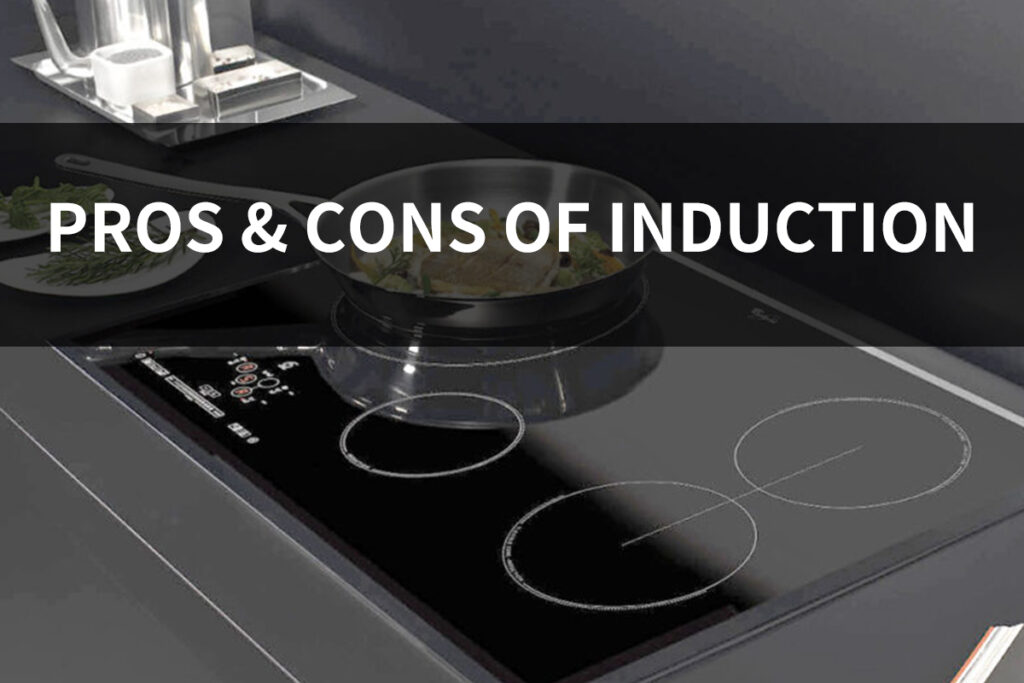Blog
Benefits And Limitations of Induction Cooktops
Why should you choose induction cooktops other than an electric/ceramic/gas stove?
We would like to introduce the benefits of Induction Cooktops as follows.
-
Faster-Higher Heat Efficiency
In terms of heating speed and efficiency, an induction cooktop far outweighs other common cooking units. This advantage can be attributed to its unique operating principle. In short, induction hobs don’t generate heat on the surface to heat the pans (thermal conduction), instead, it induces heat directly in them in electromagnetic ways with no delay. When the induction cooker is turned on, an electric current is fed through a coiled copper wire beneath the cooking surface, creating a magnetic field. Meanwhile, any magnetic-reactive cookware(made of magnetic metal) that enters this field would produce heat from inside, which directly acts on food in the cookware. On the other hand, traditional gas or electric cooking uses an outside heat source–heating the cooktop surface first then transferring heat to food.
As a result, induction cooktops are faster and more energy efficient. According to scientific research, the poorest energy conversion rate of induction cooktops comes to 86%, while the highest rate of ceramic stoves can only reach 60%.

-
Economical-Less Energy Consumption
We are facing an increasingly severe energy crisis nowadays. In the European continent, due to Russia’s suspension of gas supply, gas is in short demand and the chain reaction is the soaring price of electricity. What’s worse, the upcoming cold winter aggravates the imbalance between energy demands and supplies. In a tough period like this, induction cooktops are undoubtedly the wisest choice for households and businesses because of relatively low energy consumption. With an average 90% use ratio of electricity produced channelled to cookwares, an induction cooktop is more economical than other traditional cooking units in reducing 70% of electricity consumption.
-
Safer-No More Worktop Burns
It is common sense that we will get burned if we touch the surface of a traditional gas/ceramic/electric hob. Another hidden danger is the fire hazard caused by the flames, ignition or high temperature. However, there are some rare occasions we are too careless to avoid more or less, not to mention our children. In this sense, induction cookers are much safer in easing our worries about worktop burns. Because the heat only generates in pans which can be deemed as magnetic conductors, obviously our hands do not belong to this category.
Problems You Might Have during Daily Use of Induction Cooktops (Limitations)

To achieve even heating, the pan on the burner must be quite flat. The space between the glass surface and the metal on the pan is also important that if there is powder,water or dirt, the heating process would also be uneven. Furthermore, square pans, such as those used for frying, do not match the ’round’ coils under the glass. Thus, you would get blind angles when using cookers other than round. This also implies that the pan must be precisely centered over the coil.
-
Scratches and Trace of Use
Since the induction cooktop features a ceramic glass surface, it is possible to scratch it during daily use and wear. In fact, hard water stains, white marks and burned foods behind also often occur.
-
Never-Ending Cleaning
- You are constantly cleaning up the induction cooktop, and seems like it never ends. You will have the easiest effort cleaning the surface if you clean it up after every meal. However, we have all been there – a basic dish somehow has splatters and drops over the glossy cooktop. It is always challenging to clean the glass top because the mess cannot be wiped clean with cold water, you have to wait for it to cool down. And if you do not clean the glass every time, the residue will become severe and nasty which may need heavy cleaning with vinegar or ceramic cleaner.

Pingback: Do magnetic mats work?
I need to to thank you for this good read!! I certainly loved every bit of it. I have you bookmarked to check out new stuff you postÖ